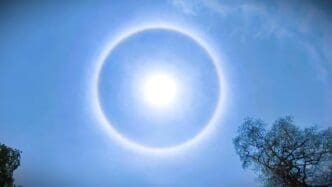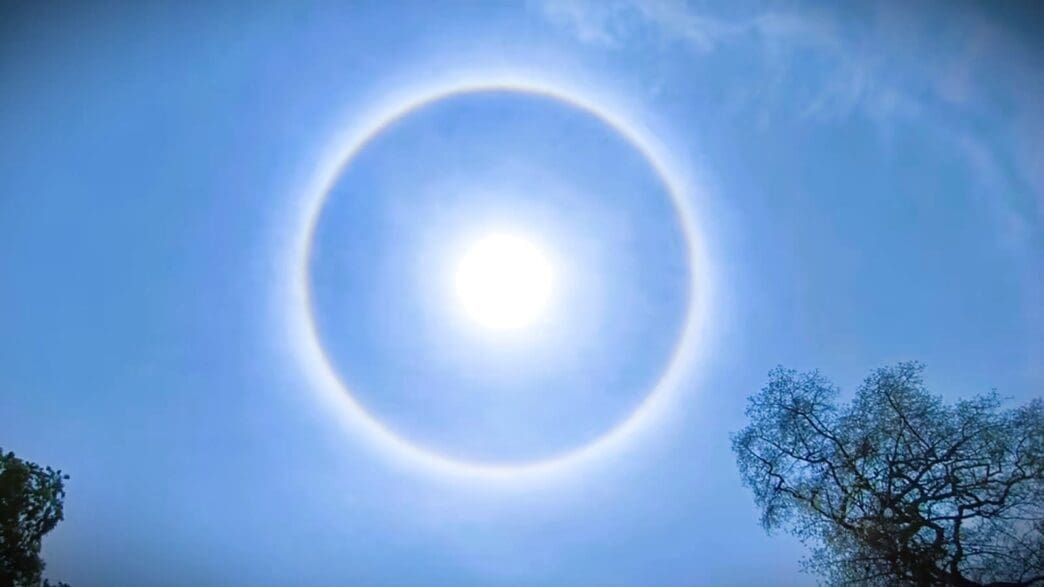Sun halos, a spectacular atmospheric phenomenon, often capture the curiosity of observers. When spotted, these luminous circles around the sun prompt questions about their formation and significance.
A sun halo appears as a perfect circle of light surrounding the sun, typically created when sunlight interacts with ice crystals suspended in the upper atmosphere. These crystals, typically in cirrus clouds, act as prisms, bending and refracting the light to form a circular halo.
The specific conditions required for a sun halo include a high-altitude presence of ice crystals that are hexagonal in shape. As sunlight passes through these crystals, it is refracted at a precise angle, typically 22 degrees, resulting in the halo effect seen from the ground.
It is important to note that not all cloud formations will produce a halo. The crystals in the clouds must be aligned randomly, and the sun must be at a particular angle relative to the observer’s position, making these halos fairly rare and unpredictable events.
In addition to their beauty, sun halos can serve as an indicator of approaching weather changes. The presence of cirrus clouds, which often herald a warm front, can signal imminent changes in atmospheric conditions, possibly bringing precipitation or storms.
Public interest in sun halos has grown, with many turning to social media to share images and experiences of witnessing this natural wonder, sparking discussions about atmospheric optics and weather forecasting among enthusiasts and experts alike.
Sun halos are not just visually captivating but also serve as reminders of the complex interactions between sunlight and the Earth’s atmosphere. They exemplify the intricate balance of conditions required for such phenomena, intriguing both scientists and the public.








